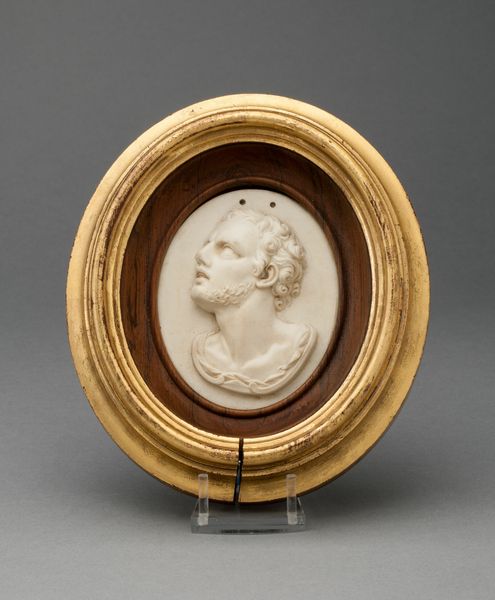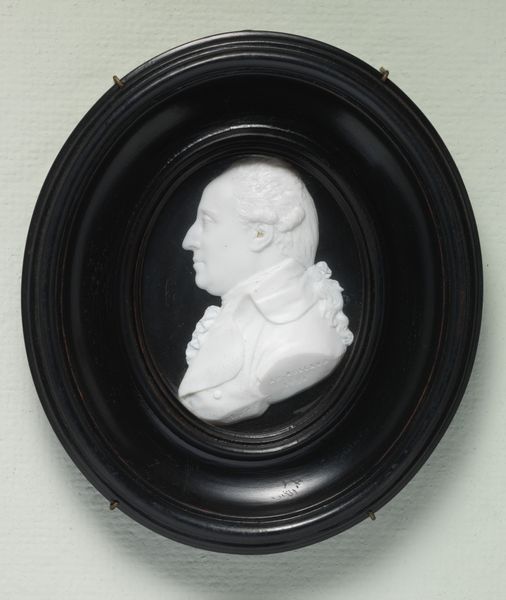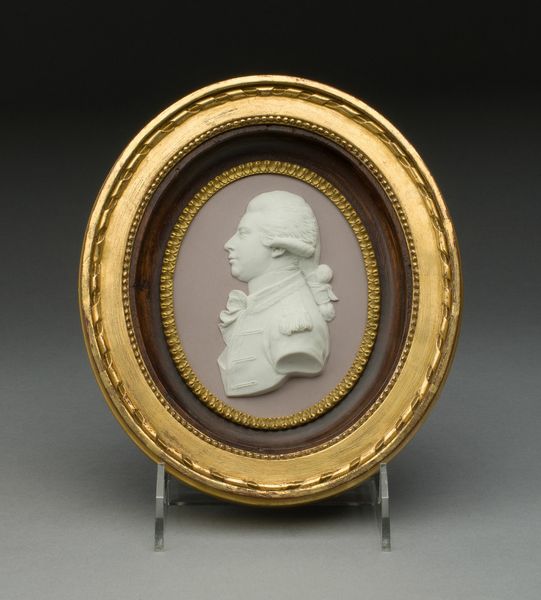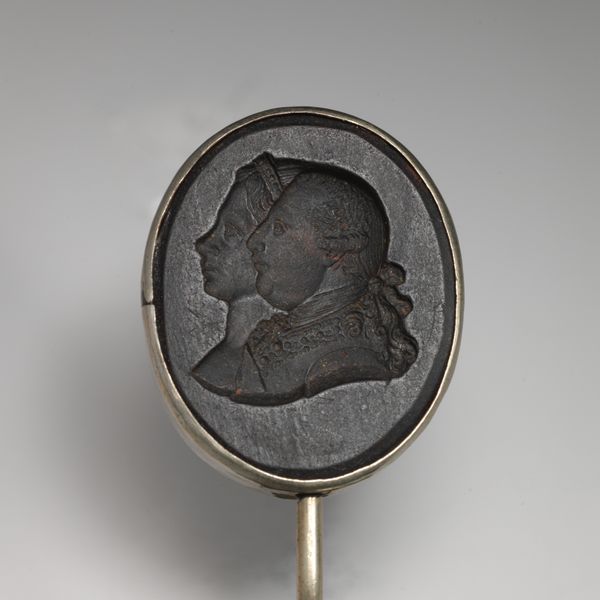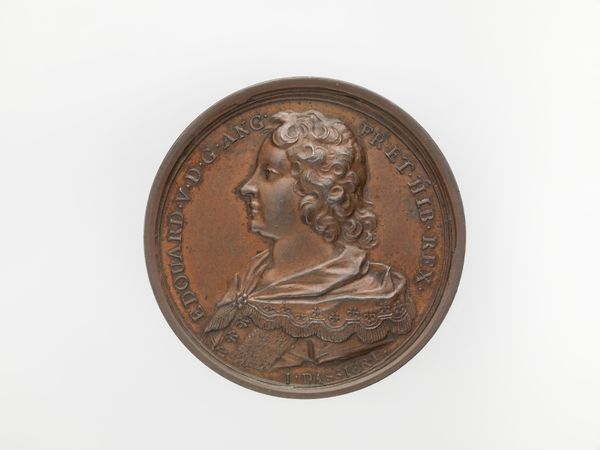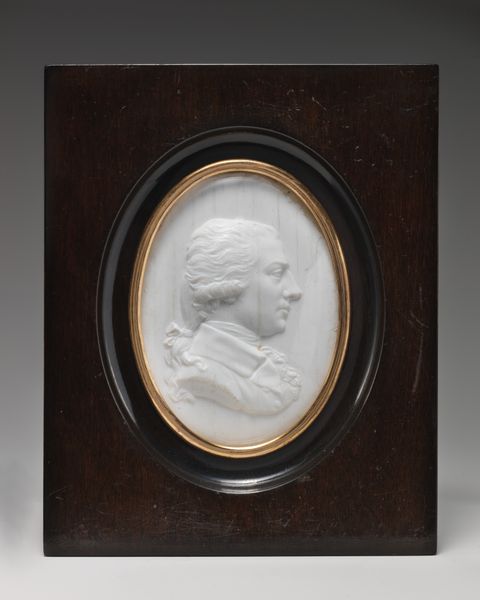
Medaillonportret van Friedrich Wilhelm II, koning van Pruisen (1744-1797) 1784
0:00
0:00
anonymous
Rijksmuseum
sculpture, marble
#
portrait
#
neoclacissism
#
sculpture
#
sculpture
#
ceramic
#
history-painting
#
marble
Copyright: Rijks Museum: Open Domain
Editor: Here we have an intriguing marble sculpture, a medallion portrait of Friedrich Wilhelm II, King of Prussia, created around 1784. What strikes me immediately is the material itself – marble. How did the choice of marble as a material impact the piece and its reception? Curator: Excellent question. The selection of marble, particularly for depicting a King, immediately evokes classical antiquity, a visual language deeply tied to power and authority in the 18th century. Consider the labor involved: quarrying, transporting, carving… Marble was not simply a material; it was a display of resources and control, a message in itself. How do you think the form challenges high art/low art boundary? Editor: Well, it is clearly aiming for high art and historical representation through its choice of subject and materials. However, I can see elements that speak to mass production because these kinds of medallion portraits could be reproduced more easily compared to full sized sculptures. Curator: Precisely! And with that potential for wider distribution comes a shift in consumption. Portraits like these became accessible to a growing middle class eager to emulate the elite. The very act of possessing such an object blurred the lines between aristocratic privilege and bourgeois aspiration. The means of producing it— the availability of material, access to artisans —directly impacted its social function. Did the King perhaps wanted his legacy spread amongst commoners as well? Editor: That’s fascinating! So, even in what seems like a straightforward royal portrait, the materials and means of production are really driving the narrative, reflecting complex social and economic shifts. Curator: Exactly. It compels us to look beyond simple aesthetics to the structures that gave rise to the artwork in the first place. Editor: Thanks for pointing that out, now the object means so much more.
Comments
No comments
Be the first to comment and join the conversation on the ultimate creative platform.
